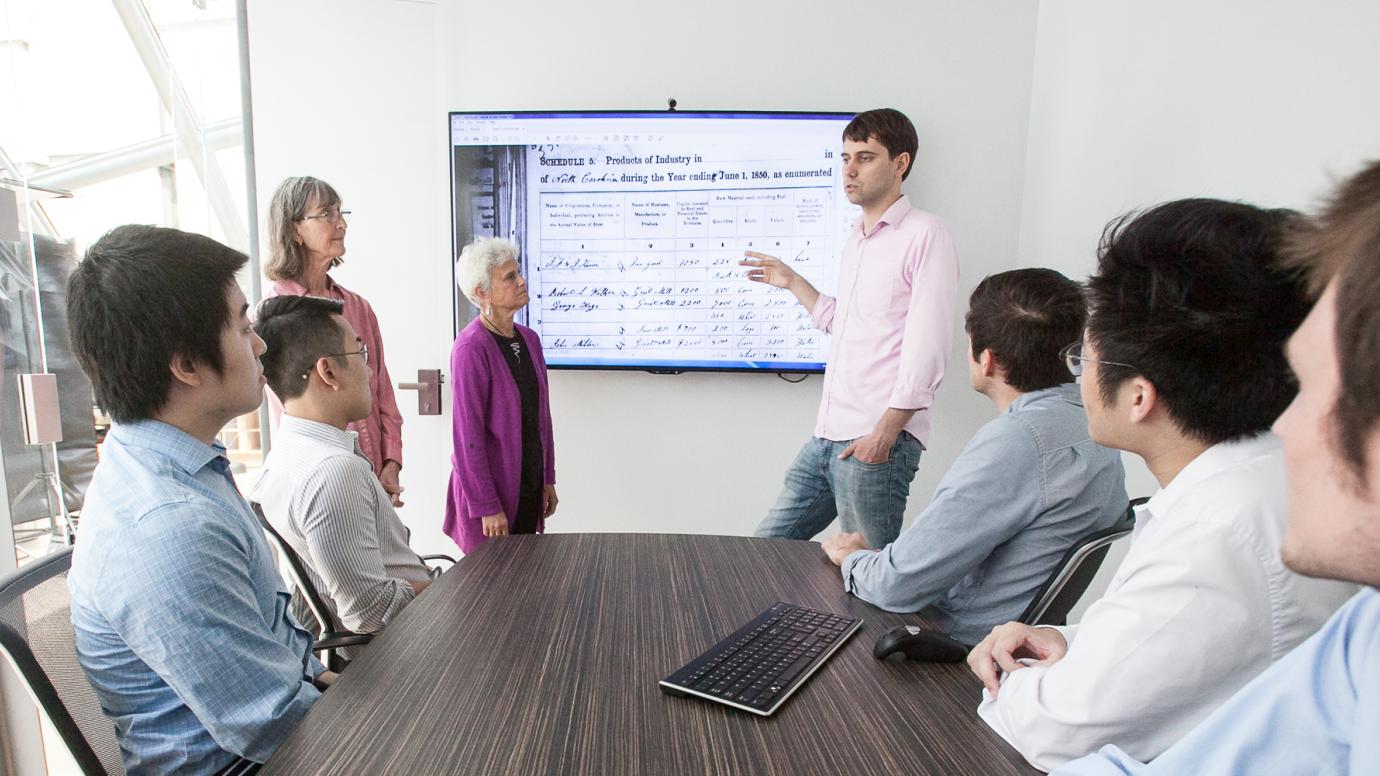Social scientists, humanists and business faculty across the University of Chicago campus are rapidly adopting and inventing new digital tools and techniques. As they do, Library staff members with expertise in everything from digitization to geographic information systems to digital data curation and archiving are developing innovative ways to collaborate with faculty to advance digital scholarship.
Gathering and digitizing data from the census of manufacturers
Richard Hornbeck, professor of economics at the University of Chicago Booth School of Business, is leading a collaborative effort to collect and digitize data gathered from 1850 to 1880 as part of the United States Census of Manufacturers. By making this data available in a machine-readable format in one location, he and his team of librarians and researchers will create a powerful tool for understanding 19th-century manufacturing across the United States and in specific regions.
Conducted every decade from 1850 to 1900, the Census of Manufacturers gathered firm names, product types, production quantities and values for every establishment producing more than $500 worth of manufactured goods. And up to this point, the establishment-level data has never been accessible to researchers in one location.
“A project of this nature could easily be overwhelming,” Hornbeck said. “It’s great to have library professionals watching over this.”
Hornbeck began the project in 2016 with a team that includes Sherry Byrne, preservation librarian; Kathleen Arthur, head of digitization; Emily Treptow, business and economics librarian for instruction and outreach; and Elisabeth Long, associate University Librarian for IT and digital scholarship.
“Researchers benefit from guidance from Library staff on strategies for organizing and executing digital project work,” explained Long. “We can facilitate project components that are new to researchers.”
Such cooperation has left Hornbeck with more time to focus on analyzing his data. He is currently working with Martin Rotemberg of NYU to examine the substantial growth in American manufacturing from 1850 to 1880 and to estimate how the expanding railroad network impacted manufacturing productivity.
OCHRE and Library’s infrastructure for description, discovery and archiving
When archaeologist David Schloen, professor in the Department of Near Eastern Archaeology, and database specialist Sandra Schloen began working to create OCHRE—the Online Cultural and Historical Research Environment at the Oriental Institute—they knew they wanted to design a customized user interface to record, integrate, analyze, publish and preserve texts from the ancient Near East, including some of the most difficult ancient languages to model in a database environment.
The Schloens turned to Charles Blair, director of the Digital Library Development Center, who led a Library team that hosts OCHRE’s high-performance database system as it has grown to support roughly 30 projects in fields from philology to archaeology to history. Each has its own framework for organizing data that is tailored to the needs of the project.
“Deeply rooted in the library tradition, Charles has a watchful eye on the future and is committed to helping the OCHRE Data Service devise and implement strategies to ensure the long-term viability and accessibility of our data,” said David Schloen.
One project currently underway, Critical Editions for Digital Analysis and Research, will provide a single-software environment in which scholars can trace textual variants and explore the transmission of major literary traditions. Initial test cases will be the first 11 chapters of the Book of Genesis, the Sumerian copies of the Gilgamesh Epic and the various early printings of Shakespeare’s Hamlet.
“OCHRE was able to leverage our existing infrastructure for description, discovery and archiving services, and we are able to provide the same type of service to other University of Chicago faculty and staff who have their own development teams but need an infrastructure for their interface,” explained Blair.






